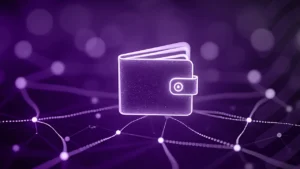Introduction: The Rising Threat of Identity Fraud
As digital onboarding, eKYC, and remote account access become the norm, so do attempts to exploit them. From fake photos and videos to 3D masks and deepfakes, identity fraud is getting smarter, faster, and more dangerous.
That’s why liveness detection has become a critical layer in modern identity verification systems. It helps determine whether the person on the other end of a camera is real and physically present, not just a static image or a manipulated video.
In this article, we explore the growing role of liveness verification in combating identity fraud, enhancing digital security, and building user trust in sectors like banking, fintech, healthcare, and more.
What Is Liveness Detection?
Liveness detection, also known as a liveness check, is a biometric security feature designed to verify that the person attempting authentication is a real, live human being — and not a spoof or presentation attack.
It’s typically used during:
- Remote onboarding
- Biometric logins (face recognition, fingerprint, iris)
- High-risk financial transactions
- Password recovery processes
Types of Liveness Verification
There are two main types of liveness checks:
1. Active Liveness Detection
Users are asked to perform actions (e.g., blink, turn head, smile) in real-time, confirming their physical presence.
2. Passive Liveness Detection
AI analyzes video or photo submissions without requiring user interaction. It detects signs of spoofing through texture, light reflection, and micro-movements.
Passive methods are increasingly preferred due to speed and a better user experience.
How Liveness Checks Prevent Fraud
1. Stops Spoof Attacks
Fraudsters may use stolen photos, pre-recorded videos, or AI-generated images to bypass identity checks. Liveness verification stops these by identifying anomalies in depth, motion, and facial texture.
2. Blocks Deepfakes and Synthetic Identities
Advanced AI can now generate realistic faces that don’t belong to real people. Liveness detection detects unnatural blinking, pixel inconsistencies, and 2D overlays that even deepfakes can’t hide.
3. Adds AI-Powered Intelligence
Modern liveness systems use machine learning to improve accuracy over time, making it harder for attackers to find and exploit system weaknesses.
4. Reduces False Approvals in Onboarding
A simple liveness check ensures that identity documents and facial biometrics match a live user, preventing fraud at the entry point.
Real-World Applications of Liveness Verification
Liveness detection is rapidly being adopted in industries where identity is key:
- Banking & Fintech: Secure digital account openings, loan applications, and eKYC
- Telecom: SIM registration and number portability
- Healthcare: Patient onboarding for telemedicine platforms
- eCommerce: High-value transactions and digital wallet logins
- Government Services: National ID enrollment, benefits distribution, and voting platforms
In regions with high identity fraud rates, liveness checks can dramatically reduce fraud-related losses.
Benefits Beyond Security
While the core purpose of liveness verification is fraud prevention, it also delivers value in other areas:
Improved Customer Experience
Passive liveness detection is fast, seamless, and often completes in seconds, reducing onboarding friction.
Regulatory Compliance
Liveness checks are recommended by regulators like FATF, FCA, and MAS as part of secure KYC and AML programs.
Trust and Brand Reputation
Preventing fraud helps businesses avoid data breaches and build consumer trust — a crucial competitive edge in digital-first markets.
Cost Savings
By filtering out fraudulent attempts early, businesses avoid downstream fraud, chargebacks, and regulatory fines.
Use Case: A Fintech Company Cuts Onboarding Fraud by 60%
A growing fintech startup implemented liveness verification during mobile app registration. Previously, the firm had seen a rise in fake account creation using ID screenshots and photos.
After deploying AI-based passive liveness detection:
- Fraudulent registrations dropped by 60%
- Onboarding speed improved by 30%
- Compliance with AML regulations was strengthened
- Customer satisfaction ratings rose due to the smoother process
Conclusion: Liveness Is the New Standard for Secure Identity
In an era of deepfakes, synthetic IDs, and remote onboarding, relying on static document checks is no longer enough. Liveness verification adds a crucial, intelligent layer of protection, verifying not just who someone is, but whether they’re truly there.
By integrating a simple liveness check, businesses can protect themselves, meet compliance standards, and give users the seamless and secure experience they deserve.






